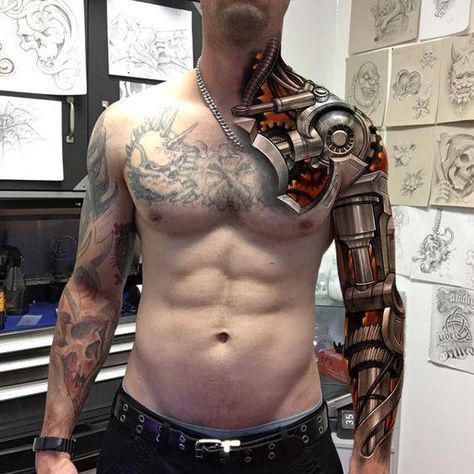
Tech Tattoos and Biohacking: The Intersection of Body and Tech
- 0
Technology has continuously pushed the boundaries of human imagination, enabling us to achieve remarkable feats. From smartphones to smart homes, our lives have become increasingly intertwined with tech innovations. However, what if we told you that the integration of technology with our bodies is no longer confined to exterior devices? Welcome to the world of tech tattoos and biohacking, where wearables truly become part of us.
Definition of Tech Tattoos
Tech tattoos, also known as e-tattoos, are electronic devices inserted or applied onto the skin. They combine the concepts of traditional tattoos and technology, resulting in a unique fusion of art and functionality. These digital advancements are built to interact with our bodies, becoming an extension of ourselves in an unprecedented way. Unlike regular tattoos, tech tattoos are not merely an aesthetic choice; they offer practical functionalities and exciting capabilities.
The Marvels of Tech Tattoos
So, what can tech tattoos do? The possibilities are endless. Imagine having a tattoo that monitors your health, constantly providing vital information about your body. These intelligent biosensors can track heart rate, blood pressure, or even detect early signs of diseases. Tech tattoos can also serve as identification or security methods, replacing traditional cards or passwords with a unique pattern on your skin.
Perhaps you’re looking for a way to control your smart devices effortlessly. Tech tattoos can turn your skin into a touchpad, allowing you to command your gadgets with simple gestures traced on your arm. Want to change the volume of your music? Just swipe your tattooed finger up or down. Need to answer a call? Tap your forearm twice. The convenience is unparalleled, merging technology seamlessly into our daily lives.
The Rise of Biohacking
While tech tattoos are impressive, their place in the vast field of biohacking cannot be understated. Biohacking refers to the deliberate modification of one’s body through the use of technology or other techniques. It involves exploring unconventional ways to enhance human capabilities or achieve a desired outcome. With tech tattoos as one avenue of biohacking, individuals are taking control and pushing the limits of what it means to be human.
Biohacking enthusiasts are increasingly experimenting with subdermal implants, where small electronic devices are inserted beneath the skin. These implants can perform a variety of functions, such as unlocking doors, storing information, or even connecting to external devices. The cyborg era is dawning, blurring the line between humans and machines.
Concerns and Limitations
While the possibilities of tech tattoos and biohacking are captivating, there are valid concerns to consider. Security and privacy are at stake when we integrate technology so intimately with our bodies. Unauthorized access or hacking can become a reality, leaving individuals vulnerable to identity theft or invasive surveillance.
Moreover, the long-term effects of having electronic devices within our bodies remain uncertain. As technology continues to evolve rapidly, we must ensure that rigorous research and precautionary measures are implemented to safeguard the well-being of individuals embracing these advancements.
The Future of Body-Tech Integration
The intersection of body and tech is continually expanding, bringing us closer to a world where man and machine merge harmoniously. Tech tattoos and biohacking represent the forefront of this revolution, showcasing how technology can permeate every aspect of our lives. As researchers, developers, and curious individuals continue to push the boundaries, the possibilities for enhancing our capabilities and augmenting our human experience seem limitless.
Embrace the potential of tech tattoos and biohacking cautiously, understanding the risks involved while seizing the opportunities they offer. The era of body-tech integration is upon us, and it’s a fascinating time to be at the forefront of human evolution.

